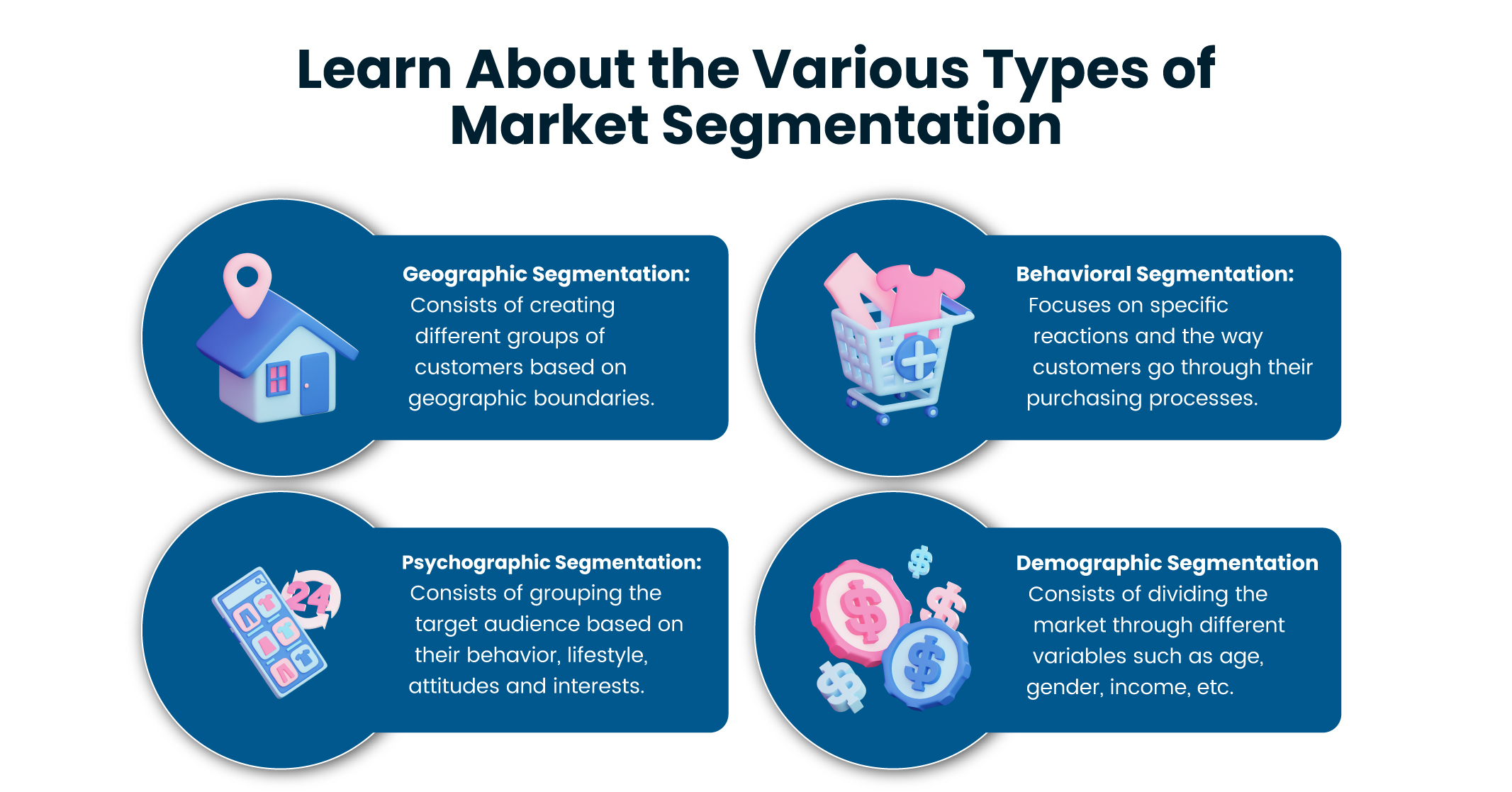I hope you enjoy reading this blog post.
If you want to get more traffic, Contact Us

Click Here - Free 30-Minute Strategy Session
Be quick! FREE spots are almost gone for this Month. Free Quote

Understanding the importance of creating a market segmentation strategy can help you effectively target your ideal audience. Market segmentation can help you divide the market into further smaller consumer groups based on similar needs. This will allow you to tailor your marketing efforts and messaging to specific segments.
How Can It Help?

Click Here – Free 30-Minute Strategy Session
Be quick! FREE spots are almost gone for this Month
Market segmentation allows businesses and brands to understand their target audience and customers better. If you are a business owner, then you can use this technique of dividing your target market into smaller, more manageable segments and gain a better understanding of the unique needs, preferences and behaviours of each group. All you need to do is define your market segmentation.
What are the Market Segmentation Benefits?
With a market segmentation strategy, you can do the following:
Market segmentation is a crucial aspect of any successful marketing campaign. By dividing your target audience into smaller groups, you can create targeted messaging and strategies that will resonate with each group. This approach allows you to focus your efforts and resources on the segments that are most likely to convert, resulting in a higher return on investment (ROI).
Types of market segmentation can be based on a variety of factors, including demographics, geographic location, psychographics and more. By understanding the characteristics of each segment, you can create customised marketing campaigns that speak directly to their needs and desires.
The Importance of Market Segmentation
Market segmentation is important for several reasons:
Learn More: The 5 Most Popular Digital Marketing Strategies for 2023

To understand the basis of market segmentation, there are numerous approaches you can take. It is important to determine how you want to segment your market based on your needs and objectives.
While creativity can help uncover new value in your market, some commonly used segmentation methods can prove useful, such as:
Developing a targeted campaign requires a clear market segmentation strategy. Relying solely on intuition and luck won’t get you far. A market segmentation strategy involves identifying, organising, researching and targeting a specific segment of a broad target market. Here are the 4 steps to help you understand better:
Let’s look at some market segmentation examples to see how it works in practice.
Looking for a Digital Marketing Partner? Look no further than Traffic Radius. We are a leading Melbourne-based marketing agency; we help clients establish their brands online.
Get in touch with us today to find out about our services and pricing plans. To get a free quote, give us a call today.
The initial step in your market segmentation strategy involves identifying the major segments within your target market by exploring your broad market.
There are several ways to accomplish this, such as:

To identify the best market segment for your next marketing campaign, you can use Hooley’s Segment Attractiveness and Resource Strength Framework. This framework evaluates the potential of a market segment based on its size, growth potential, profitability, competitive intensity, entry barriers, customer needs and compatibility with your company’s values. It also considers your company’s ability to compete in that segment based on the following factors:
Once you’ve chosen a target market, you can start creating offers, messaging and advertising strategies that appeal to that segment. To design your offer, consider the segment’s pain points and desires.
Points To Remember: When crafting messaging, use language that resonates with the segment’s daily experience, avoiding trendy or inappropriate language. Additionally, you should choose advertising venues where your audience spends their time.
Learn More: How Digital Marketing Helps to Grow Your Business
Having a market segmentation strategy is a potent tool that can aid in enhancing your marketing plan and allow you to target your desired audience more efficiently. By dividing your market into smaller, specific groups based on essential characteristics, you can craft more customised and appropriate marketing campaigns.
Points To Remember: It’s crucial to keep in mind that markets are dynamic, and audience preferences can change over time. Therefore, it’s essential to revisit your segmentation strategy regularly to ensure that you’re still satisfying your audience’s needs. This approach will enable you to:
Now that we’ve covered the basics of market segmentation, let’s dive into how to create a market segmentation strategy.
Step 1: Define Your Target Audience
The first step in creating a market segmentation strategy is to define your target audience. This involves identifying the characteristics and behaviour of the people who are most likely to buy your products or services.
Step 2: Identify Your Segments
Now that you know who your target audience is, the next thing you should do is identify your segments. This involves analysing the characteristics and behaviour of your target audience to determine which groups share similar needs or desires.
Step 3: Develop Messaging and Strategies for Each Segment
Once you have identified your segments, the next step is to develop messaging and strategies for each segment. This involves tailoring your marketing efforts to each group to ensure that your messaging resonates with their needs and desires.
Learn More: How Marketers Are Spending Their Money in 2023
There are several tools and resources available to help you with market segmentation, including:
Market segmentation is a powerful tool for any business looking to increase ROI and build stronger connections with its target audience. By dividing your target audience into smaller groups and tailoring your messaging and strategies to each segment, you can create a more personalized experience for your customers and achieve better results.
Use the tips and strategies outlined in this guide to create an effective market segmentation strategy that drives results for your business.

LEAVE A REPLY